How to Write a Magnificent Blog Description (With 5 Great Examples)

“Improve your organic rankings without even being a direct ranking factor”.
That’s the promise and the purpose of a blog description.
I will get back to you on how writing a blog description can improve your visibility on the SERPs.
But for now, let’s start from scratch for a clearer understanding.
If you have landed on this article, you are probably fed up hearing about blog descriptions and want to learn possibly everything about it.
Moreover, you may also want to know how to benefit from it.
In this definitive guide on blog descriptions, I have broken down every essential methods that gets you one step closer to optimizing your blog for meta tags.
Let’s begin.
What Is a Blog Description?
A blog description (also known as meta description or meta description tag) is an HTML attribute in the form of a short summary with its main purpose to help readers, as well as the search engines in understanding the particular page better.
Here’s the simplest example of a blog description:

Oftentimes, a meta description works as an “organic ad text” and influences the click-through rate.
Let’s say, you are searching for the query “YouTube SEO” in Google.

You look carefully at the top two results i.e. 1 & 2.
After observing, which one will you click on?
If you ask me, I would go for 1.
Why?
Not because it’s the first result but because it has got a compelling blog description and in short, a strong reason to click.

If I breakdown, I can see the following benefits of clicking on the first result:
- Conversational tone (you and I).
- Serves the user intent.
- Evokes curiosity.
- And whatever else positive you can think of.
Not to say that the second result is not appropriate. At last, it’s a matter of choice of an individual.
That’s the real power of a blog description.
With that, let’s deep dive into the sheer importance of adding meta description followed by proven tips and how to do it actually.
Why Is Blog Description Significant?
Have you ever seen an advertisement when you search for a particular query?
Let me show you one:
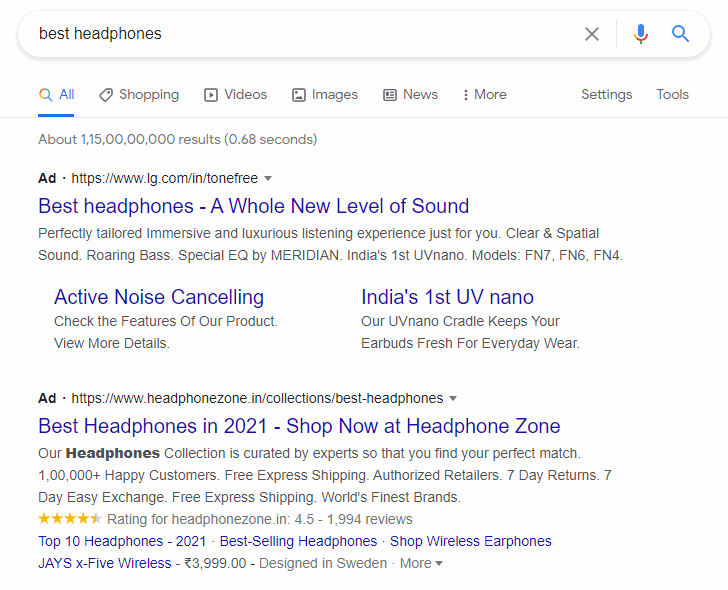
What do you see?
The advertiser puts on much weight into writing great meta descriptions besides writing a headline.

Why? Because he pays for every click that he has to bear.
And the users who are interested in their product will surely read the description.
It will not only save their time but also save the advertisers money by not clicking on the link if it seems irrelevant.
The lesson: Learn from the advertisers when it comes to writing converting blog description.
Learn how they use copywriting in writing a perfect blog description.
Back to an important question, why on earth is the meta description even important?
You may have a very important question: “What if I don’t write a blog description for my blog posts and pages?”.
Though SEO tools give a red signal when you omit writing a blog description, it is not at all a requirement to write one.
In September 2009, Google officially announced that meta tags play zero roles in influencing your organic rankings.

I know how you are feeling right now – “Dhruvir Zala, why are you wasting my time telling something which does not benefit me?”.
I get you and you are right, simply adding them to your articles and pages will not make you a better blogger on the go.
But if meta descriptions exist, they have a purpose for their survival.
As discussed earlier, they will help differentiate your page/post/blog from others.
Writing a great blog post is of no use when no one clicks on your article despite being ranking on top pages.
That’s where a description matters.
It may not be a direct ranking factor, but as good blog descriptions increase click-through rate and drive more clicks to a certain page, this, in turn, creates a positive impact in the eyes of the search engines.
If you do not add meta description to any page, search engines will automatically pick a snippet of text that’s relevant to the search query.
Pro tip: Sometimes, it’s also better off not writing a meta description and let the search engines choose the best for your readers.
When in confusion, try it.
How to Write Meta Description That Works Every Time?
Essentials and tips in writing an exceptional blog post description from today itself.
1. Write astounding copy –
What you write in it matters most. You cannot just stuff in keywords only to lose trust by your limited readers.
Observe great blogs to see how they write. It’s copywriting.
2. Use distinct descriptions for different posts and pages –
Except for the homepage, every important post and page that you publish on your site should have a unique meta description.
The homepage has a common one that displays when someone directly searches for your site or name.
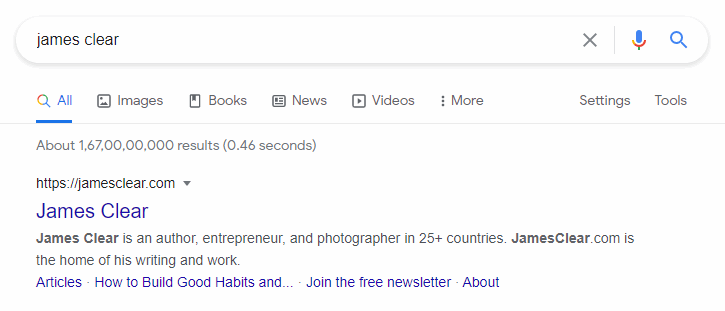
Consider adding different descriptions on every post and page.
If not, then copying and pasting one to all is not a viable option. Instead, leave it blank so that webmasters can fill it accordingly.
3. Try to keep it short yet concise –
As per Google’s guidelines, the optimum length of any blog post should be equal to or less than 160 characters.
What happens if you write more than that?
They will automatically truncate the extra works just like this:

Considering this, it is not advisable to only focus on one writing within the given limit. If you need to explain important steps and it takes a little more space, then go for it.
Don’t waste an hour in removing a single word to make it 160 from 161. I call that a wholesome lunatic.
4. Explain clearly what the post or page is all about –
Don’t keep spinning the wheel and land the reader nowhere.
Clearly describe and specify what a page is all about.
In the case of the homepage, you can add in your major purpose that you will fulfill through your blog, mission statement, brand ethos, etc.
Note: This article on blog branding can help to gather some inspiration.
5. Use power words –
No wonder power words create a huge impact on a person’s choices in almost every area.
From shopping to making a great decision, power words have a significant role in booking the deal or altering it.
In fact, every great landing page that you see has some kind of conversion-focused power words in it.
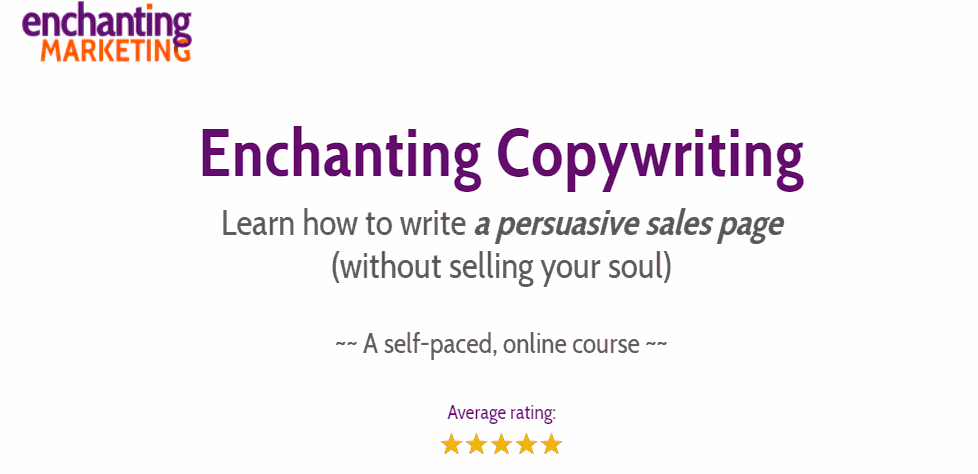
Similarly, including power words in your blog descriptions can help readers feel the content.
This time, they will not be able to use their minds – but their hearts.
This is how high-ticket products are sold easily.
Have a look at more than 150 power words by Enchanting Marketing.
6. Add focus keyword, LSI keywords, and other relevant natural keywords –
Though stuffing is not recommended, you can insert your main keywords and keywords around it to optimize your page.
When a user searches for a certain query and finds similar or relevant keywords in your blog descriptions, then he/she will be more likely to click on your link.
7. Questions also works great –
You can also add a question related to the topic to arouse curiosity.
It forces their brains into thinking the answer to the question even if they do not wish to do it.
Eventually, they will land on your site to find the answer.
Blog description helps. Right?
8. Start with a purpose and end with a CTA –
Lastly, never write anything without defining its clear purpose.
Also, end with a call-to-action so that the reader can get motivated to click.
In some of the examples, I will show you how some of the blogs smartly use the mix of the above tips to fully utilize the power of a blog description.
Now, let’s get into a bit more technical part.
How Do I Add A Blog Description In WordPress?
SEO plugins do the job very well in WordPress.
If you are not using WordPress, you may have to grasp a different approach.
But for the majority, it’s WordPress.
I use the RankMath plugin to optimize my blog for on-page SEO and a part of technical SEO.
With their free plan, you get many features.
First of all, to add a blog description to your homepage, install the RankMath plugin and activate it.

Now, head over to Rankmath and then click on titles and meta.
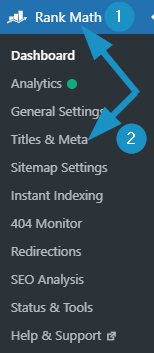
If you have a static website like mine, then you will see something like this meaning that you will have to add your blog description by entering your homepage itself.
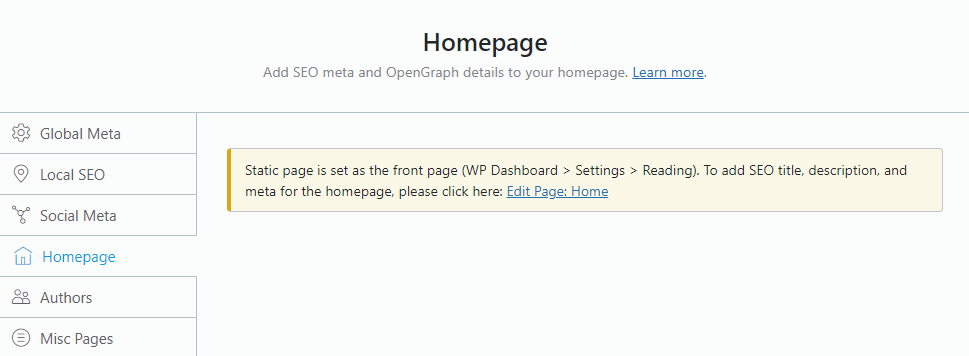
So, head over to your pages and click edit on your homepage.

Once the page loads, you will see the RankMath setting on the right side showing the SEO score. Click on that button.

Then, click on edit snippet

You will be able to now edit your blog description for your homepage very easily.
Note: Unlike me, if you do not have a static page, then you can directly add homepage meta in the RankMath > titles and meta settings as discussed before.
Easy right?
The same steps apply to adding blog descriptions to the posts and pages.
Edit any post or page and then perform the same series of steps.
In the case of a category, you can do so by clicking posts > category.
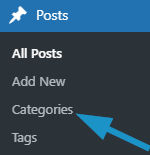
You will be able to see all of your categories here. Click edit to anyone where you wish to add a description.

A new editing page will open up where you will see a text area to add your description.
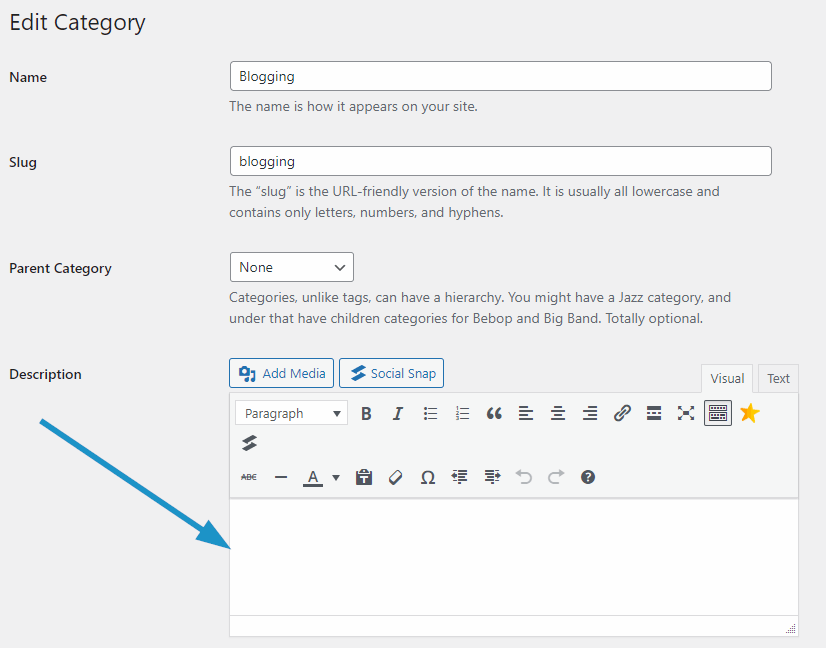
This should clear the queries.
If you are using any other SEO plugin like the Yoast SEO or All in One SEO, the process will be pretty much the same.
This was the easy and quick process of adding blog descriptions to your homepage, posts, pages as well as categories.
Best Blog Description Examples and Why They Are Profound
1. Mark Manson (Article) –

What makes this special: Mark Manson (one of my all-time favorite non-fiction authors) does a great job in writing super-strong descriptions.
If you look above, you will see that he has added a call-to-action at the end i.e. “Here’s what it means to me”.
The reader will be encouraged to click and learn further.
2. App Sumo (Homepage) –

What makes this special: They have made it specifically clear to their readers that when it comes to software for entrepreneurs, they are the best and certainly the no. 1 in the market.
The number works great.
3. Zen Habits (Homepage) –

What makes this special: First things first. Zen habits founder i.e. Leo Babauta has mentioned his name in the beginning.
This is the first step towards creating a profound brand.
Along with that, the blog description also clears what you will exactly get by visiting Zen Habits
Simple yet powerful.
4. Moz (Homepage) –

What makes this special: The description starts with “backed by the largest community of SEO”. This is enough to convert any SEO practitioner into a raving fan.
It also works as a sort of CTA.
Also, the ending is soothing.
How?
The company promises to make SEO, inbound marketing, link building, and content marketing super easy through its tools.
5. Making Sense of Cents (Homepage) –

What makes this special: The owner Michelle has solved the real pain point of their target audience by including the specific niche in the meta description.
She has talked about nothing but personal finance which is super targeted and it will surely attract the right readers cum customers.
These were 5 blog description ideas that I found worth sharing.
Similarly, whenever you search for any keyword on Google, try to observe such blog descriptions and take inspiration from them.
That’s how you write successful descriptions.
Write these two golden words rule where you can look at it daily. Maybe near your closet or something.
The words are OBSERVE and REACT.
Try it. It works in almost every chore that you perform in your normal routine.
Observing others’ work and then reacting with planning will help you write spellbinding blog descriptions that people would like to admire.
Conclusion
So, what’s the real deal?
Writing a great blog introduction and awesome blog conclusion is one thing.
But for people to land at those places, they will first closely look at your title and description.
Once again, people read blog descriptions. Please do not ignore them.
Instead, do what I said a while back. Observe how your rivals write and implement accordingly.
Learning copywriting would be another great addon to a successful meta description.
This was all from me.
Hopefully, you learned something new about the blog description from this article.
Now, I would like to hear from you.
What are your opinions on blog descriptions?
Did you get any success or SEO advantage by adding and optimizing them?
Let’s discuss that in the comments below right now.


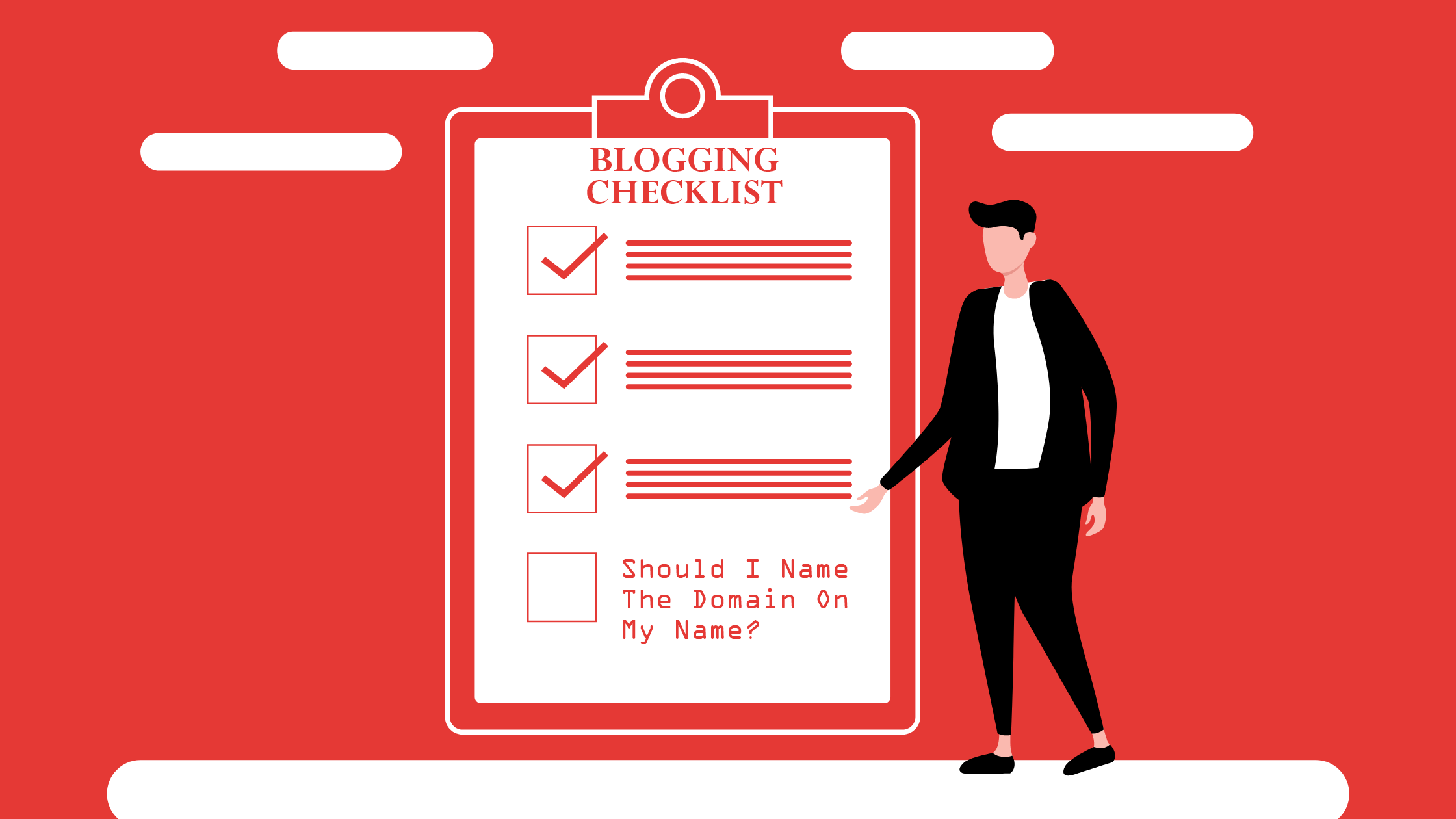


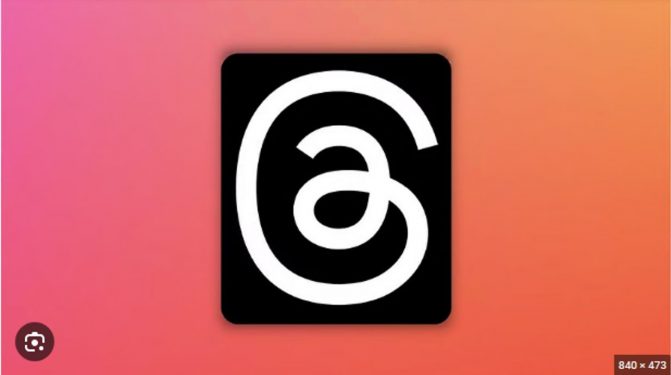

So Funny I Forgot to Laugh